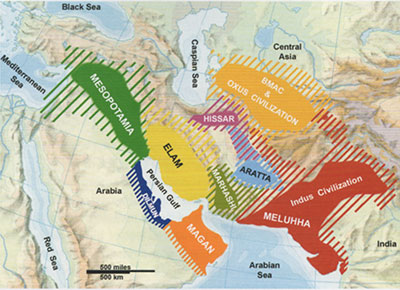From what I red (little?) the North Pontic Neolithic was rather a mixed culture were ancient HG habits were not overwhelmed by new agricultural modes. And compared to western Catacombs, the Yamnaya people were very less "farmerlike" in their economic ways. Could all that confirm a rather weak agricultural aspect of the South to North Caucasus colonisation (what demic input?), even before the metals ages? And Maykop seems to me more a "parasite" warlike spotty settled society that a slow continual colonisation (and I recall their craniometric means closer to SE Caspian people of the time than to Caucasus people with something from farther in them, spite this is not a proof, because they could have passed through South Caucasus by South Caspian even if it was not so easy); but I'm not archeologist and I could put someones to smile. Just to say that the most deeply farmerlike influences could have been more the result of a western proto-Tripolye and full Tripolye input (what dates?) than a S-Caucasus one, the last inputs being about Late Chalco and after (+Balkan cattle in Steppes). We know some of the later Steppes cultures show a Central-East European demic input, and it could confirm affirmations of scholars about part of the post-Tripolye pops going eastwards and taking on more nomadic ways of life (surely more in an osmosis pattern than in a conquest one), being responsible of EEF among CWC (soon enough) and others, later in Russia steppes. But for Catacombs, Grigoryev spoke of a clear I-I linguistic input so maybe more an eastern Caspian input, than a South Caucasus one. We know agriculture in SE Caspian was very evolved around the 2000BC but surely it began earlier. (I want not link recent BMAC culture to this possible more ancient input (before 3000 BC), nor I link by force BMAC to PIE pops, to date, even if possible).
*BMAC could have been linked to Hurro-Urartian language speakers and not I-E ones and Harappa to a language close to Dravidian or Elamitic?
I would be glad to have ancient auDNA of two Catacombs groups (Western and Eastern, not exactly the same); we have only mtDNA rather steppelike, but I don't know which Catacomb group has been studied for it, helas.
That's another thing that's very obvious in the Archeaology. All of the copper on the steppe was coming from the balkans, as was farming material culture. This was happening long before Yamnaya layers, which is sort of the basis of my Pre-Yamnaya PIE stance.


